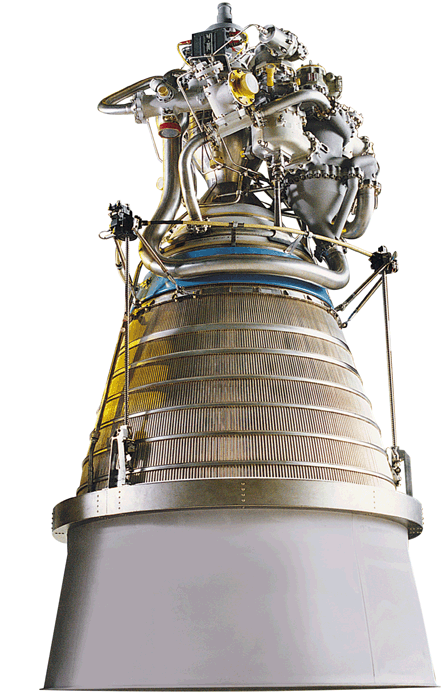Commercial spaceflight start-up Xcor Aerospace has teamed with the United Launch Alliance (ULA) to develop a low-cost challenger to the 52-year-old Pratt & Whitney Rocketdyne RL10 engine.
The agreement between Xcor and the ULA, a Boeing-Lockheed Martin joint venture marketed as "the nation's rocket company", quickly follows a set of successful demonstrations of Xcor's aluminium alloy nozzle technology.
Demonstrations have shown that Xcor's major innovations, including the aluminium materials and a piston-based pump for cryogenic fuels, could form a feasible alternative to existing booster technology.
When combined with a liquid oxygen/liquid hydrogen engine, the new engine will produce 25,000-30,000lb thrust (110-135kN), allowing the new venture to compete for upper-stage positions on evolved expendable launch vehicle (EELV)-class rockets.
 |
|---|
© Pratt & Whitney RocketdynePratt & Whitney Rocketdyne RL10 engine |
"By working with Xcor, we see the potential to develop engines that offer the performance and reliability our customers need at a more affordable price," says George Sowers, the ULA's vice-president of business development and advanced programmes.
The new partnership is aimed at challenging the dominance of the RL10, which since its introduction in 1959 has powered a wide range of space missions, including NASA's Viking and Voyager, and more recently the Lockheed Atlas V and Boeing Delta IVs that formed the basis for the EELV programme.
ULA and Xcor's announcement emphasises a cautious approach will be taken with the introduction of all-new materials, such as the aluminium nozzle, and engine design to compete with the proven reliability of the RL10.
A series of "go/no-go" decision points built into the development programme is intended to manage the risk of what even the partners describe as a "challenging effort".
The partnership also boosts Xcor's plans to leverage the aluminium nozzle for the 5K18 liquid oxygen/kerosene engine powering its Lynx suborbital spaceplane.
"The critical engine technology we're developing for ULA may one day launch satellites, capsules and space stations for government and commercial customers," says Xcor chief executive Jeff Greason. "Customers such as the US Air Force, NASA, the National Reconnaissance Office, Boeing and Bigelow Aerospace all stand to benefit from this partnership."
Separately, Mojave-based Xcor has sold at least six Lynx suborbital flights to the independent, non-profit Southwest Research Institute of San Antonio, Texas, which has also bought two flights aboard Virgin Galactic's suborbital SpaceShipTwo, also being developed in Mojave, and will use the flights to carry scientists and experiments beyond the atmosphere.
The 9m (30ft)-long Lynx is being developed to take off and land from a normal runway up to four times a day, carrying a pilot, passenger and payloads of up to 650kg (1,430lb) in either the pressurised cabin or exposed to the vacuum of space or thin air of the upper atmosphere, with a maximum altitude of 330,000ft.
Xcor had planned to test fly its Mark 1 Lynx prototype in 2010, but now expects to fly in 2012, with first flight of the commercial version, Mark II, to follow some nine to 18 months later.
Lynx promises aircraft-like operations from any licensed spaceport with a 2,400m runway, suitable abort options, 2h turnaround and 40 flights between preventive maintenance actions. Lynx operates under visual flight rules, and initially it will only fly during days of good visibility.
SpaceShipTwo carries two pilots and, with its much larger cabin, up to six researchers who could conduct out-of-seat microgravity experiments.
Virgin Galactic is also taking a vastly different technical route. SpaceShipTwo will be carried to 50,000ft by a specially designed four-engined, twin-fuselage "mothership", WhiteKnightTwo, before being released to make its rocket-powered ascent to as high as 316,000ft. Virgin, which in 2004 won the Ansari X Prize for the first private manned spaceflight, says its test programme will run through most of 2011 before commercial operations begin.
- Additional reporting by Dan Thisdell in London
Source: Flight International


























